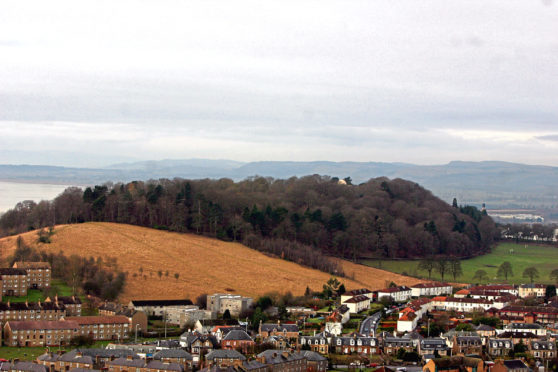Between the years of 1870 and 1994, more than 10,000 people were buried in Dundee in unmarked graves. I am no-one’s idea of a historian, so this is not the kind of information I normally carry around in my head.
The reason it is there at all and continues to linger, is twofold.
Firstly, there is the particular relationship I enjoy with the Balgay Hill. I never return to Dundee without also returning to the Balgay, and I never return to the Balgay without also returning to this particular corner of its north-facing slopes known as the Common Ground.
The Common Ground is set aside to commemorate the 10,000.
It is, I believe, a beautiful and compassionate gesture, and the kind of thing that has always endeared me to my own place on the map of the world.
I was there on Saturday. At this time of year it is arguably at its most beautiful, although prime autumn also infuses the place with its own magic.
So the place is an almost miraculous blend of natural beauty and human compassion, and that was what I was celebrating.
This is a well-wooded corner of the Balgay. There are fabulous Californian redwoods of both species – the coastal redwood and the giant sequoia. There are humble rowans, there is oak, larch, sycamore, ash, copper beech, holly and horse chestnut among others.
Sitting on a bench near a stone where a plaque explains the Common Ground, two facets of my surroundings caught my eye.
One was a rowan sapling, six feet tall and skinny as a broom handle. It has found sustenance in the roots of the massive trunk of one of the founding fathers of the Common Ground.
The rowan leans north, the veteran leans south into the slope, which is what it has learned as one of the principles of survival here.
But rowans are forever taking root in the most unpromising circumstances. The fork of a Scots pine often sustains a rowan in old-established woods like Rothiemurchus or the Black Wood of Rannoch. And I have lost count of the number of times I have met one growing directly from bare rock on a Highland mountainside. I never yet found a golden eagle eyrie where there are no rowans nearby, and rowan greenery decorates many an eyrie. Not that there are golden eagles here.
The other eye-catcher is in the canopy. Like so much of nature this month, the canopy’s leaf cover is late, so under-developed. Take the leaves of that copper beech: the combination of lateness and airiness and sunlight that laves it from an angle as well as from above, creates a soft-toned and hypnotic leaf-dance of pale pink and pale yellow.
The deep, dark copper of high summer is for another day, another season, but if you had told me that the process that creates it unfolds this way, I may well not have believed you.
The Common Ground is lovingly untampered with, unweeded, unseeded, unpruned, a parcel of land where nature is given its head.
So there is a proper understorey that evolves from snowdrops to daffodils to wild hyacinths (also known as bluebells in a wood like this), and now that the blue is emerging, so is the white of wood sorrel and wood anemone and wild garlic. And here and there, some of the more domesticated flora of the wider Balgay have interloped via the wind and the ways of birds.
I mentioned at the beginning that the reason I know about the Common Ground is twofold, and the other component part is this: for years, in fact for more than half my life, I was led to believe that my grandfather was one of the 10,000. That he was buried unmourned in a pauper’s grave.
But when in time, I wrote something of my famous footballing grandfather’s story I discovered that he was not buried in a pauper’s grave or any other kind. He was cremated. And at this funeral were the entire Dundee team of the day, four lord provosts of the city, and 500 people.
My family’s account of him was a spectacular lie, and I never knew why.
So I love this place with a sensibility I can confer on nowhere else on Earth. And not more than 100 yards from this bench, just over that stone wall, was the house that cradled the first 13 years of my life, and this was the first of all my landscapes.
